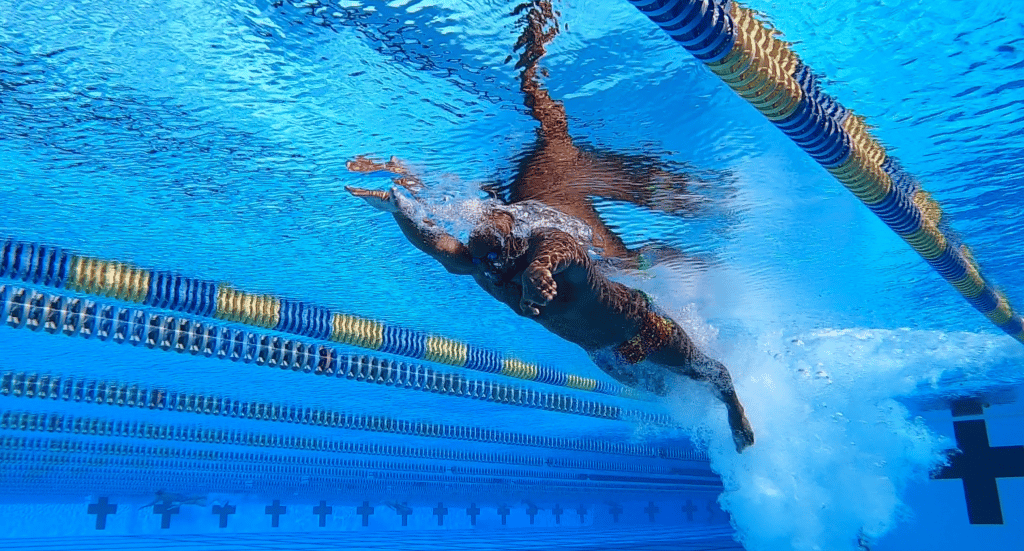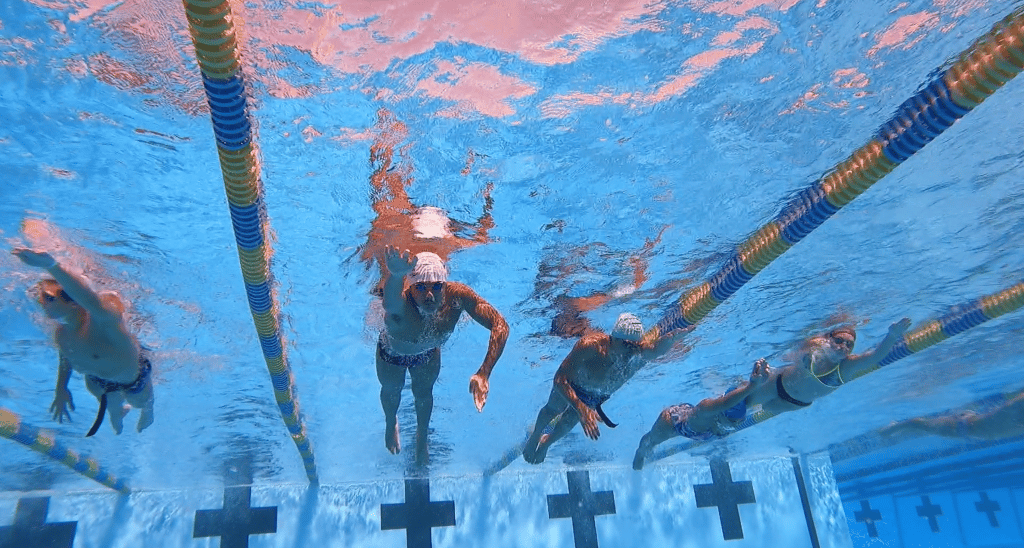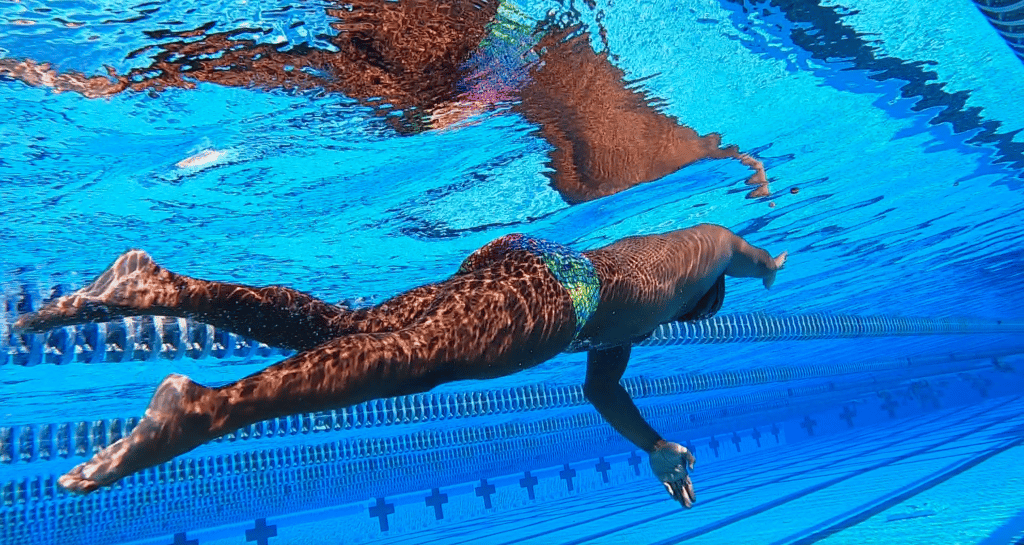Recently I heard well known Lakeside Swim team Head Coach, Mike DeBoor, say this to his swimmers at practice and it got me thinking… Naturally we know (and can feel), the last two thirds of a Freestyle Pull is the propulsive phase in Freestyle. We always generate propulsion to move forward when an arm is in this part of the stroke, but I never thought about how the breakout stroke could be different than the rest of the strokes on each lap.
Let’s dissect why!
For clarification purposes, the breakout stroke is the stroke that a swimmer decides to break through the surface from being under the water to over it (well really on top of it). Every swimmer’s breakout distance is different, but that 15 meter mark rule was put in place so that swimming doesn’t turn into a purely underwater sport.
I wrote a blog a few years back about the ideal breakout distance, which in basic terms should be when a swimmer’s speed slows down enough underwater that is about equal to (but still above) their best surface speed. That’s when a swimmer should breakout. Swimmers don’t want to wait too long, or when their speed is slower than their surface speed; and they definitely don’t want to breakout too early. All swimmers start at a faster speed than they normally swim at off the walls and starts, so they definitely want to carry that as far as they can.
What Makes the Breakout Stroke Special?
A few reasons:
1.) That Higher Speed

As we established above, swimmers are carrying a faster speed under – so naturally, they will be zooming into that first stroke with a fast speed if they time the breakout well. This aids into a bit more speed generation on that initial breakout stroke compared to the rest of them.
2.) Anchoring

When they’re breaking out, all swimmers bodies is at an upward angle as if they’re climbing themselves out of the water. This allows swimmers to anchor a bit more on that first stroke and produce a greater force when they get to that propulsive phase. Another way to think about this is the arm is actually lower in the water than when they are normally at the surface – this allows for swimmers to ‘grab’ a hold of the water more during the backend of their Freestyle Pull.
3.) Legs

We already established that swimmers are at an angle during the breakout stroke, which helps the lower half of the body – the legs to only be kicking water, no air. This allows for the legs to generate more propulsion than at the surface, because they don’t have any option but to kick against water. Remember kicking air doesn’t generate any momentum forward.
So if swimmers can combine carrying their faster speed from underwater, anchor well on their initial stroke, and have a stronger motor from their legs – the speed produced on that very first stroke of each lap will be higher than the rest of the strokes taken on that exact same lap.
How to Practice Better Breakouts?
Get with your coach to figure out your ideal breakout distance. If it’s Freestyle, Butterfly, or Backstroke, work your Dolphin Kick count (+ transition to Flutter Kick) if that stroke respectively uses it. For Breaststroke, you need to figure out the distance as well but in regards to a pullout.
Also, it’s always really good for swimmers to work their breakouts at their maximum speed possible, so giving sets at practice that focus on max sprints + breakouts are great opportunities for swimmers to work on breakouts more.
Plus the gentle reminders and coaching cue from DeBoor: “The Breakout Stroke is Your Fastest” are great ways to help swimmers narrow in their focus to importance of the breakout stroke itself.
Until Next Time,
Abbie Fish

3 Responses
Excellent . I appreciate your efforts
Insightful, I’ve heard different versions of it. I agree with the points. I used to keck above water. I was told by a waterpolo athlete. That’s correct it does generate any momentum.
Appreciate your feedback!